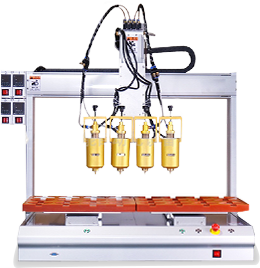

Plastic housings/brackets for automotive electronic equipment are indispensable protective and supporting carriers in automotive electronic systems. They are made of high-performance engineering plastics such as ABS, PC, PBT and PC/ABS alloys through precision injection molding. Its structural design combines functionality and adaptability. The housing is usually a closed or semi-closed cavity with a reasonable layout of buckles, slots, mounting columns and other structures inside to stably accommodate electronic components such as on-board sensors, controllers, and display screens; the brackets are mostly hollow and lightweight designs, and seamlessly connect with the car body and interior parts through precise positioning holes to achieve reliable installation of electronic equipment.
Core advantages | Technical highlights | Application value |
Excellent protection performance | With IP67 and above protection level, combined with ultrasonic welding or sealing strip design, it can effectively block dust and rainwater intrusion; the flame retardant level reaches UL94 V-0 level, reducing the risk of circuit fire | Applicable to high dust and wading areas such as automobile engine compartments and chassis to ensure the safe operation of electronic equipment in extreme environments |
High adaptability and integration | Customized design based on the structure and installation requirements of automotive electronic equipment, with precise wiring harness channels, heat dissipation holes and interface positions reserved; support multi-functional integration, such as built-in electromagnetic shielding layer and heat dissipation fins | Simplify the vehicle assembly process, improve the integration of electronic equipment, and adapt to the electronic system layout of different models |
Lightweight and high strength | Thin-wall design and reinforced engineering plastics are used to reduce weight by 40%-60% compared with metal materials; through glass fiber reinforcement or micro-foaming process, the tensile strength reaches 50-80MPa, and the impact resistance is excellent | Help the lightweight of automobiles and reduce energy consumption; withstand driving vibration, bumps and external force impacts to protect internal components |
Resistant to environmental aging | Adding anti-UV agent and antioxidant, passing 1000 hours of xenon lamp aging test, long-term use without deformation and fading; chemical corrosion resistance, can resist erosion by liquids such as engine oil and detergents | Extend the service life of components, maintain stable appearance and performance, and is suitable for the entire life cycle of automobiles |
Material and process
.Material selection
ABS: Balanced overall performance, easy to form, suitable for cost-sensitive interior electronic equipment housings, such as car radio housings.
PC: High transparency, strong impact resistance, commonly used in instrument panels and display screen protective covers.
PBT: High temperature resistance and outstanding chemical resistance, suitable for electronic control unit (ECU) housings in engine compartments.
PC/ABS alloy: Combining the advantages of both, it has high strength, high toughness and flame retardancy, and is widely used in various automotive electronic components.
.Processing technology: Use high-precision injection molds and intelligent injection molding equipment, and optimize the filling path with mold flow analysis; some products are processed through secondary processing, such as spraying, electroplating, and laser engraving, to achieve appearance decoration and functional improvement.
Item | index | Description |
Protection level | IP67/IP69K | Meet the dust and water resistance requirements of different environments |
Flame retardant level | UL94 V-0 | Meet the fire safety standards of the automotive industry |
Working temperature | -40℃ - 125℃ | Adapt to extreme climates and high temperature environments in the engine compartment |
Tensile strength | 50 - 80MPa | Ensure the structural strength of components |
Impact strength | ≥25kJ/㎡ | Resist external impact |
Application scenarios
. Intelligent driving system: Provide protective housing and mounting brackets for sensors such as millimeter-wave radar, camera, and lidar to ensure that the sensors work accurately under complex road conditions and help the stable operation of autonomous driving functions.
. In-vehicle entertainment and information system: The housing and bracket used for the central control display and car audio enhance the driving experience with beautiful design and reliable support.
. Power control system: Adapt to the high-temperature resistant and flame-retardant housing of the battery management system (BMS) and motor controller (MCU) to ensure the safe operation of the power system of new energy vehicles.
. Body electronic system: As a mounting bracket for the window controller and door control module, it realizes the stable connection between the electronic components and the body structure and improves the reliability of the vehicle electronic system.
 Headquarters tel.
Headquarters tel. E-mail.
E-mail.